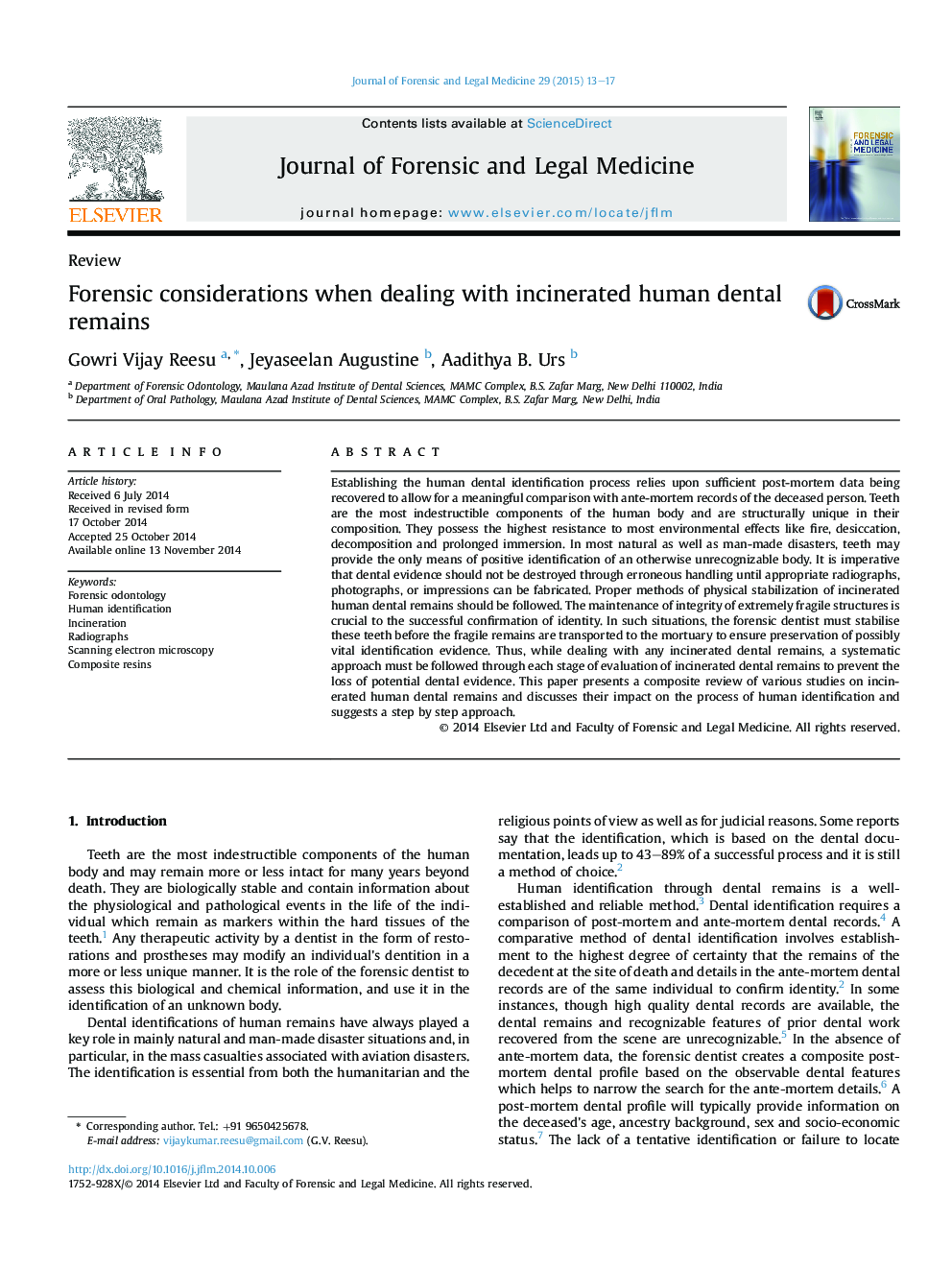| Article ID | Journal | Published Year | Pages | File Type |
|---|---|---|---|---|
| 101781 | Journal of Forensic and Legal Medicine | 2015 | 5 Pages |
•Blackened charred teeth are more stable than porcelain white teeth that result from exposure to prolonged high temperatures.•Runny mix of acrylic spray using a horsehair brush is the material of choice for dental stabilization of incinerated remains.•Wrapping the heads of victims after stabilization prevented further displacement of the dental structures during transportation.
Establishing the human dental identification process relies upon sufficient post-mortem data being recovered to allow for a meaningful comparison with ante-mortem records of the deceased person. Teeth are the most indestructible components of the human body and are structurally unique in their composition. They possess the highest resistance to most environmental effects like fire, desiccation, decomposition and prolonged immersion. In most natural as well as man-made disasters, teeth may provide the only means of positive identification of an otherwise unrecognizable body. It is imperative that dental evidence should not be destroyed through erroneous handling until appropriate radiographs, photographs, or impressions can be fabricated. Proper methods of physical stabilization of incinerated human dental remains should be followed. The maintenance of integrity of extremely fragile structures is crucial to the successful confirmation of identity. In such situations, the forensic dentist must stabilise these teeth before the fragile remains are transported to the mortuary to ensure preservation of possibly vital identification evidence. Thus, while dealing with any incinerated dental remains, a systematic approach must be followed through each stage of evaluation of incinerated dental remains to prevent the loss of potential dental evidence. This paper presents a composite review of various studies on incinerated human dental remains and discusses their impact on the process of human identification and suggests a step by step approach.
